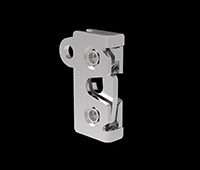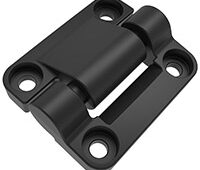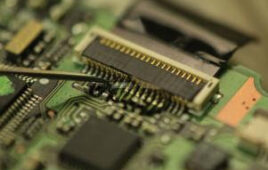PEM® Type SL™ self-clinching steel locknuts from PennEngineering® integrate a unique TRI-DENT® locking feature to hold mating screws tight over time by providing sufficient torsional resistance to withstand vibration, thermal cycling, and other disruptive forces that could loosen the screws in service. These prevailing torque locknuts, which meet 3 cycle locking performance to effectively “self-lock” the threads of mating screws, further will allow for the screws to be removed and re-attached repeatedly as needed without compromising the locking threads.
 The self-clinching technology adds even more reliability for the attachment. The locknuts install permanently in host metal sheets to become integral parts of an assembly, will not loosen or fall out, never have to be restrained from rotation with a tool, and never have to be handled again. Compared with conventional chemical adhesives or affixed patches, the locknuts can help save time and money during production by minimizing the number of required assembly steps and materials.
The self-clinching technology adds even more reliability for the attachment. The locknuts install permanently in host metal sheets to become integral parts of an assembly, will not loosen or fall out, never have to be restrained from rotation with a tool, and never have to be handled again. Compared with conventional chemical adhesives or affixed patches, the locknuts can help save time and money during production by minimizing the number of required assembly steps and materials.
PEM Type SL locknuts are available in thread sizes #4-40 through 3/8-16 and M3 through M10. They are recommended for use in aluminum or steel sheets as thin as .040” / 1mm with maximum hardness HRB 80 (Rockwell “B” scale) and HB 150 (Hardness Brinell).
Quick installation is accomplished by placing the locknut in a properly sized mounting hole and applying sufficient squeezing force using a standard press to embed the fastener’s clinching ring completely in the metal sheet. All clinching is performed on the fastener side of the sheet, allowing the reverse side to remain flush and smooth without protrusions.
These locknuts join a diverse family of PEM self-locking fasteners in a variety of types and locking-feature styles. Detailed specifications and performance data (Bulletin LN), fastener drawings, and models can be accessed at www.pemnet.com.
PennEngineering
www.pemnet.com
Filed Under: Screws • nuts • bolts, FASTENING • JOINING • locks • latches • pins, MOTION CONTROL





Tell Us What You Think!